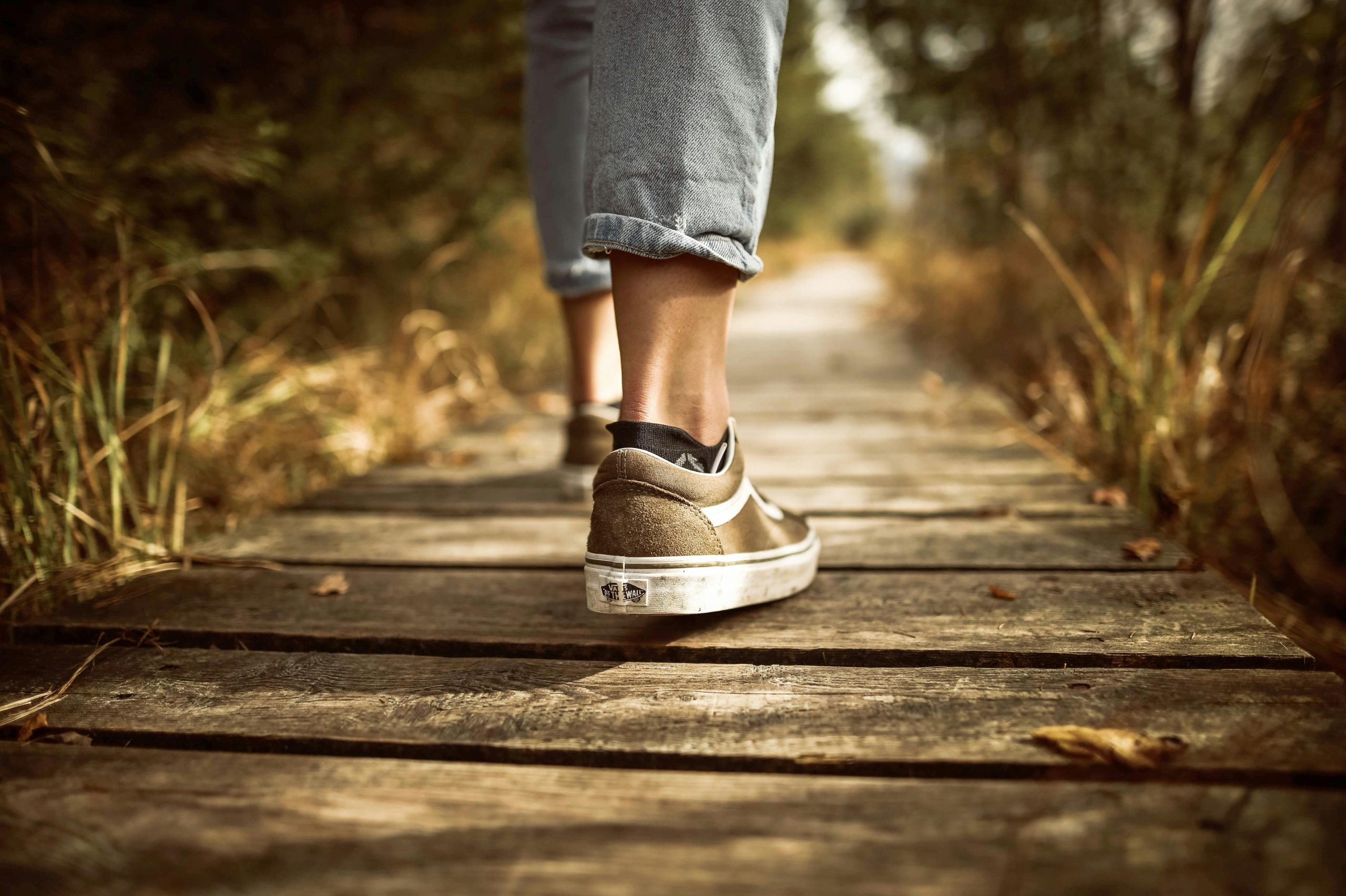What are the benefits of walking backwards?
Have you tried walking backwards also known as ‘retro’ walking?
There are several benefits to changing the direction in which you walk but also some important points that you should note in terms of safety.
But firstly the benefits:
-
Builds muscle strength
With backward walking, it’s the opposite your toes hit the ground before your heel (the opposite to forward walking). This changes how the muscles work in your hips and legs, making them work harder. The quadricep muscles in the front of the thigh are engaged to help propel you backwards which in turn helps to build lower-body muscle strength.
-
Improves balance and gait
Walking backward can improve gait, walking speed, and balance, especially after an injury or illness. Alongside other physical therapy treatments retro walking improved gait and muscle strength in people with knee osteoarthritis and ACL injuries. One research paper found that those recovering from a stroke had better balance, walking speed and cardio-respiratory fitness in 4 weeks.
-
Burns more calories than forward walking
Because your muscles work harder, reverse walking can help you burn more calories than regular walking.
-
Boosts cardio-respiratory fitness
Walking is an excellent form of cardio that can boost your heart and lung health allowing your heart and lungs to provide oxygen more efficiently during exercise.
-
Increases flexibility and range of motion
Retro walking changes your usual gait, so when you step backward, your knee straightens before your foot lands. This repeated movement can improve your range of motion if you have trouble extending your knee fully due to injury or illness. It can also boost flexibility in the ankles and hamstrings at the back of the thigh.
-
May help limit knee pain
Walking in reverse puts less pressure on the knee joint and kneecaps as well as strengthening the quads, which help support the knee. This may ease knee pain from injuries osteoarthritis or running related pain.
-
Challenges your brain
Walking backwards is good for your brain, challenging you to pay more attention and consciously think about how you move. This can help proprioception (awareness of the position and movement of the body) and body awareness as you move.
-
Prevents exercise boredom
If walking is your main source of exercise, walking backward is a great way to change your routine and switching things up can help prevent exercise boredom as you challenge your muscles in new ways.
Who should not try walking backwards without support?
Anyone who has issues with balance or a health condition that may increase the risk of falls must speak to a health professional before trying retro walking. This also includes those who have had recent injuries, surgery, pain, or limited motion.
How do you walk backwards safely?
Retro walking outside can be dangerous so it’s best to practice on a treadmill. You should set it at a low speed with no incline, and make sure you hold onto the side rails. Start with short intervals and build up slowly. it’s a good idea to have someone close by when you try retro walking.
Ref: https://www.goodrx.com/well-being/movement-exercise/benefits-of-walking-backwards
photo: pexels.com pripicart




